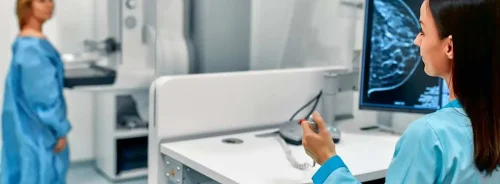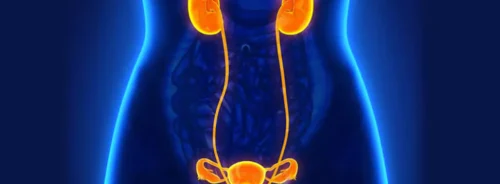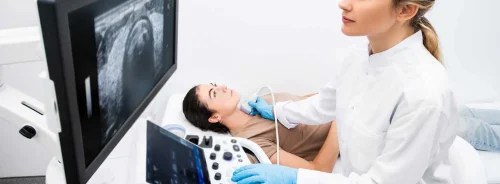Knowing before surgery whether cancer cells have started to move through tiny blood or lymph vessels in the cervix, known as lymphovascular space invasion (LVSI), is important for choosing the safest treatment plan. It can influence the extent of surgery, whether fertility-sparing options remain suitable and whether extra treatment is needed afterwards. Standard MRI scans already help doctors see tumour size and structure, but subtle patterns linked to LVSI may be hard to judge by eye. Using advanced computer analysis, information hidden in scans can be translated into signals that estimate LVSI risk. A two-hospital evaluation tested this approach, compared several modelling methods and examined whether combining imaging with routine clinical information improved results. The work included checks on how consistently tumours were outlined and whether the model’s predictions matched what was found after surgery.
Must Read: Ultrasound vs MRI in Cervical Cancer Staging
Cohort and Imaging Methods
The evaluation included 196 people with early-stage cervical cancer from two hospitals. One hospital provided 142 cases gathered from December 2020 to April 2023, split into a group used to build the model and a separate group used to check it. The second hospital supplied 54 cases from May to October 2023 to test performance in a different setting. Across all participants, 79 had LVSI and 117 did not. Ages ranged from 26 to 77 years with an average of 52.7 years. In general, LVSI was associated with larger tumours on axial T2-weighted images. Disruption of the dark stromal ring on T2-weighted imaging was also observed in the first and the external test groups. Squamous cell carcinoma antigen levels differed in the building and internal test groups, and mean and median apparent diffusion coefficient values differed in the internal test group.
All patients had MRI within two weeks before surgery on 3.0-tesla scanners. The protocol included T2-weighted imaging, contrast-enhanced T1-weighted imaging and diffusion-weighted imaging. Maps of the apparent diffusion coefficient were derived using a standard model. Tumours were outlined by a junior radiologist and confirmed or corrected by a senior radiologist. In a subset of 30 patients, outlines were repeated after four weeks, showing strong agreement on both repeatability and overlap. Images were resampled to consistent resolution to reduce variation. The computer then extracted a large set of measurements from the different scan types, capturing aspects of shape, overall intensity and texture. A separate set of routine clinical measures was also considered, including the longest tumour diameter on T2-weighted images, stromal ring disruption, squamous cell carcinoma antigen and summary diffusion metrics.
Model Performance
From the scan measurements, the team selected those that were stable and most informative, then built models using a range of machine learning methods. The best results came from an AdaBoost model based on multi-parametric MRI, which combined information from T2-weighted, diffusion-weighted and contrast-enhanced scans using 12 selected measurements. This model performed strongly when tested on data held back at the first hospital and maintained useful performance when tested at the second hospital. A separate model built only from clinical information was clearly less accurate.
Combining the imaging score with clinical factors produced a comprehensive model. In the first hospital, it performed similarly to the imaging-only model. In the second hospital, the combined approach showed higher performance than clinical measures alone and was comparable to the imaging-only model. When the same scan measurements were given to ten other common algorithms, their performance was consistently lower than AdaBoost across building, internal test and external test groups. Additional checks showed that predicted probabilities aligned well with actual outcomes, and decision analysis suggested a higher potential clinical benefit for the AdaBoost imaging model across a range of threshold probabilities. Inspection methods highlighted that texture-based measurements from transformed images were among the most influential contributors, indicating that fine-grained patterns within tumours held important signals linked to LVSI.
Strengths and Limits to Consider
The approach was assessed both within the hospital that built the model and in a separate hospital, supporting generalisability across different scanners and clinical workflows. Imaging was acquired close to surgery, and clear steps were taken to ensure consistent tumour outlining and stable measurement extraction. The analysis also compared a broad set of modelling strategies, providing a balanced view of how the chosen method stacked up against alternatives and against routine clinical measures.
There are, however, important limits. The overall number of participants was modest, which can introduce selection effects and reduce certainty about performance in wider populations. Very small tumours were excluded, so results may not extend to these cases. While adding clinical information to imaging produced gains in the external hospital, similar gains were not seen internally, suggesting that the extra value of clinical data may vary by setting. These points underline the value of testing in larger groups and across more centres to refine estimates of performance and to clarify where combined imaging-clinical models bring the most benefit.
An AdaBoost-based computer model that analyses routine MRI scans estimated LVSI risk before surgery in early-stage cervical cancer. It outperformed a model built only from clinical measures and compared favourably with several other modelling approaches, with results holding up in a second hospital. A combined model that added selected clinical factors achieved similar accuracy without consistent superiority. Taken together, the findings indicate that advanced analysis of standard MRI can support preoperative risk stratification and may help teams plan the extent of surgery and the need for adjuvant treatment, while highlighting the need for broader validation to confirm where the approach adds most value.
Source: British Journal of Radiology
Image Credit: iStock







